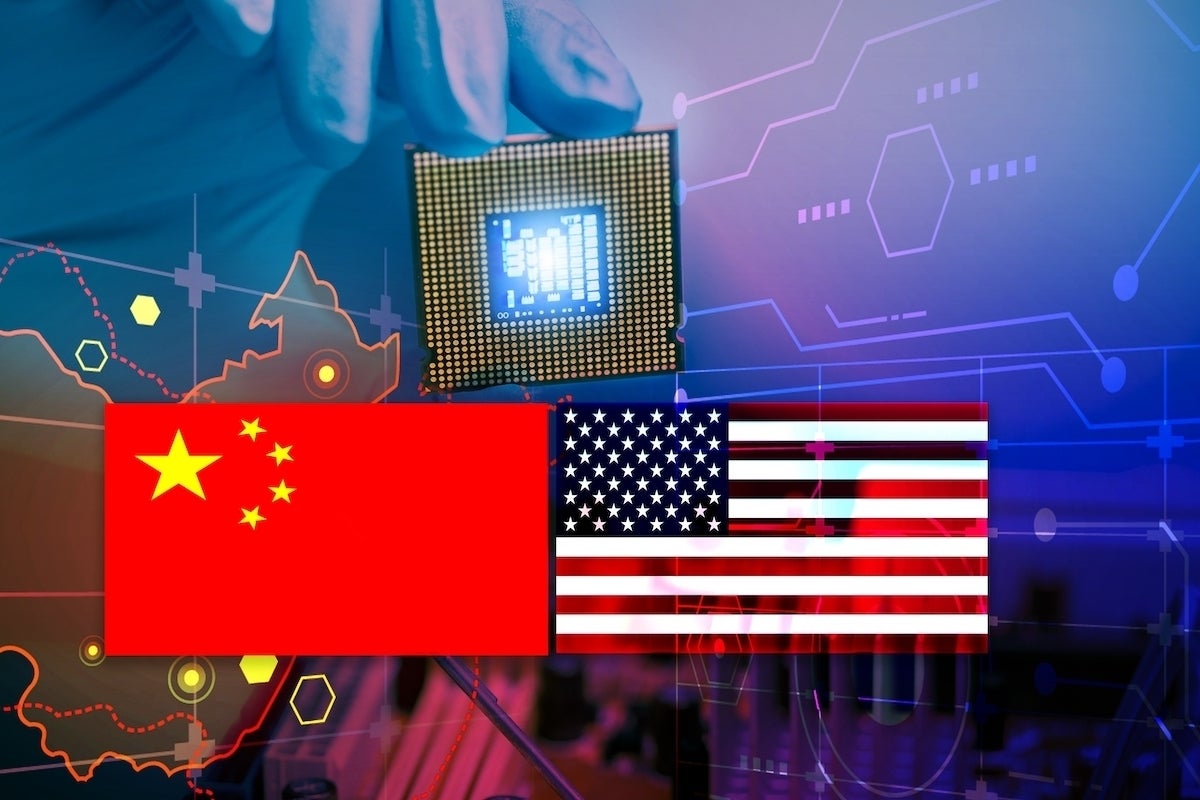China is stockpiling chipmaking equipment despite the US government’s trade restrictions on the export of semiconductor manufacturing equipment to the country.
Some of the leading producers of chip manufacturing technology have almost doubled the percentage of revenue they’ve generated from China since 2022, according to a report from Bloomberg.
Applied Materials, a California-based company that supplies equipment, services and software for the manufacture of semiconductors, reported that 44% of revenue generated in the fourth quarter of its fiscal year 2023 came from China, compared to just under 20% in the same quarter of 2022.
Lam Research, another California company that provides wafer fabrication equipment and services, saw revenue from China hit 48.5% in September 2023, up from 30% in September 2022.
However, in a sign that the US government is taking a no-nonsense approach to enforcing its export restrictions, on the same day Applied Materials published its earnings, it was reported that the US Justice Department was launching a criminal investigation into the organization for purportedly evading export restrictions.
The company allegedly sent hundreds of millions of dollars worth of equipment to Shanghai-based Semiconductor Manufacturing International Corp (SMIC), via South Korea and without an export license, Reuters reported, citing a number of unnamed sources.
Chinese companies continue to exploit restriction loopholes
The accusations levelled against Applied Materials are not the only way China has seemingly been able to navigate its ways around the trade restrictions.
According to its annual report released earlier this week, the US-China Economic and Security Review Commission found that Chinese companies are routinely able to bypass the restrictions — which have been placed on chipmaking equipment that can manufacture advanced chips at the 14 nanometer node or below — by claiming the technology they’re purchasing is being used on older production lines.
“With limited capacity for end-use inspections, it is difficult to verify the equipment is not being used to produce more advanced chips,” the report said.
Suspicions were first raised earlier this year when it was revealed that Chinese telecoms giant Huawei had produced a smartphone containing an advanced 7 nanometer chip.
The Huawei Mate Pro 60 contains Kirin 9000s chips — 7 nanometer chips that have been made in China by the partly state-owned SMIC, according to an analysis published by TechInsights, a semiconductor research and analysis organization.
SMIC was barred by the US from obtaining the machines necessary for the production of 7nm chips in late 2020 and to date, the most advanced chip SMIC had been known to manufacture was a larger-scale 14nm semiconductor.
An investigation by theUS Department of Commerce into how SMIC got hold of the technology is currently under way.
Copyright © 2023 IDG Communications, Inc.
This story originally appeared on Computerworld

